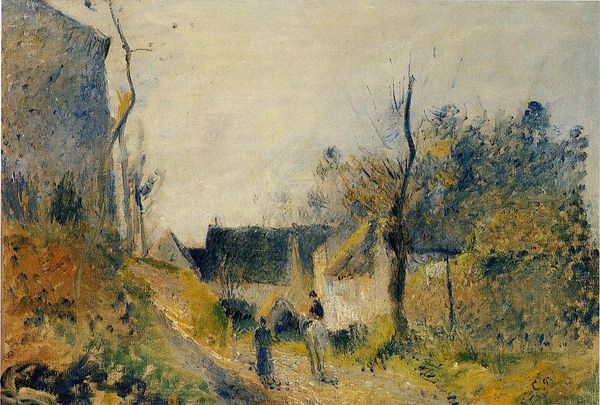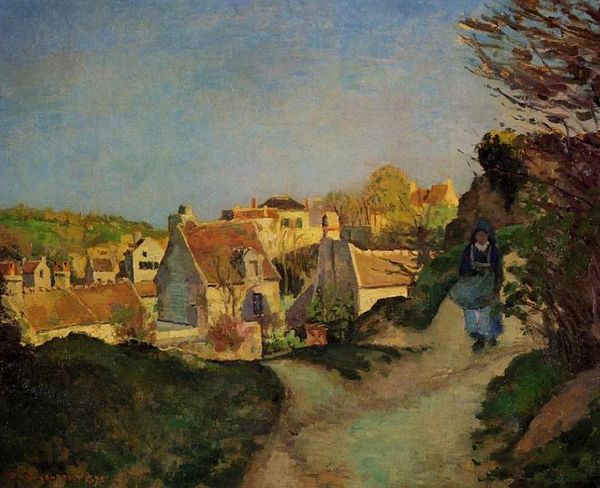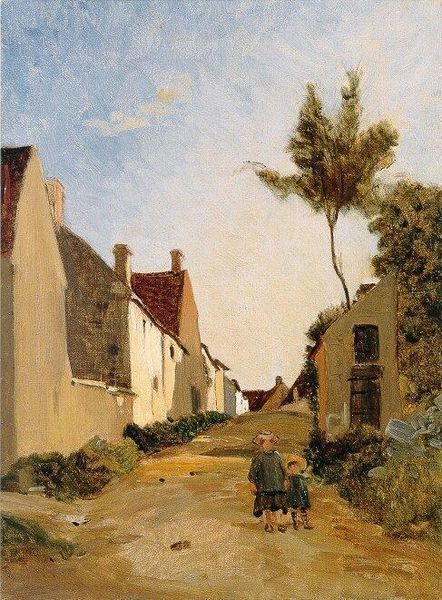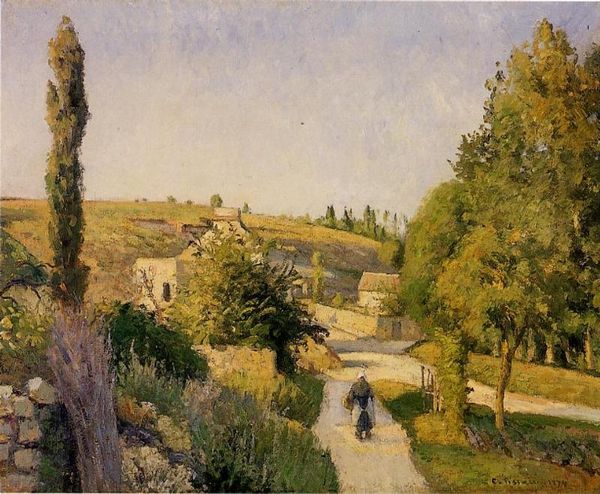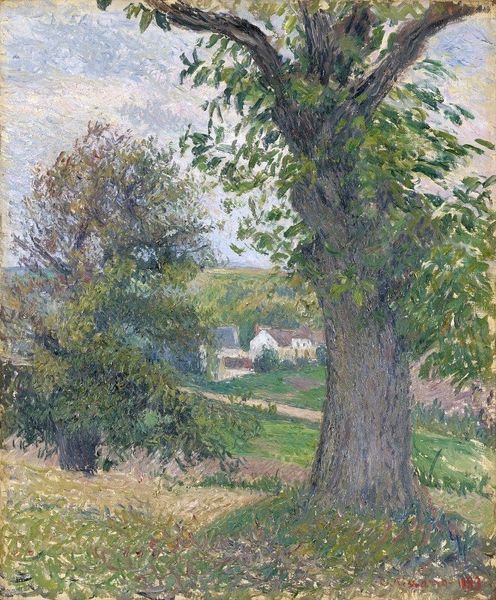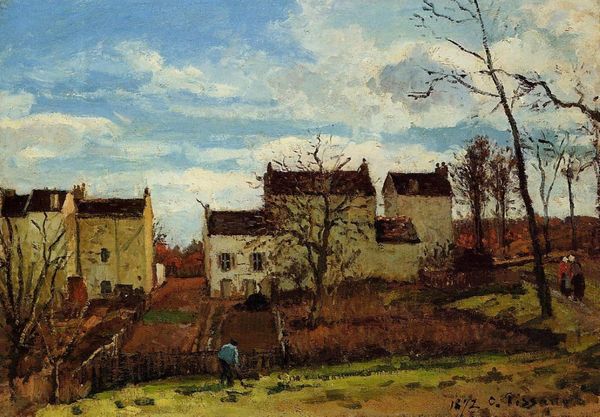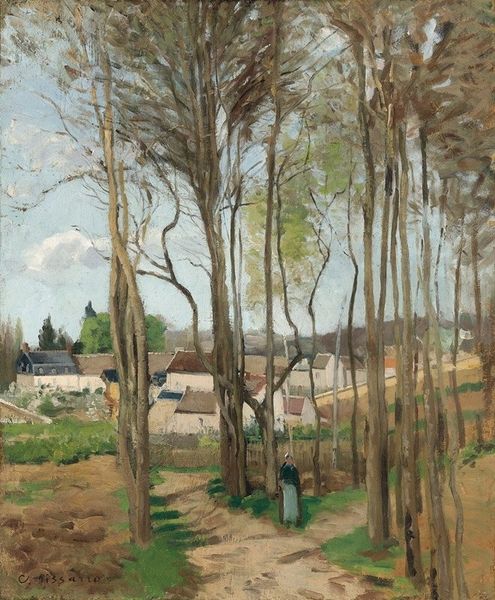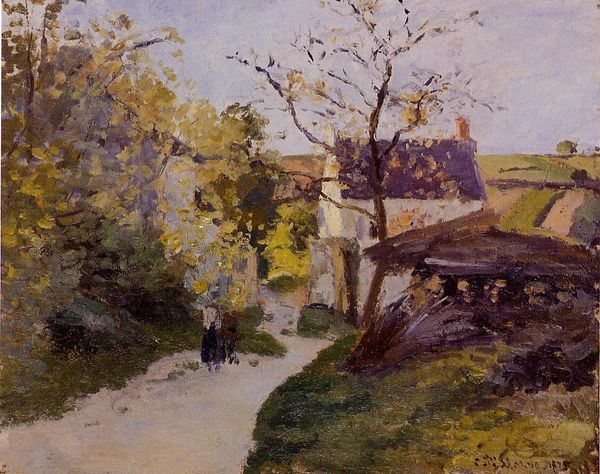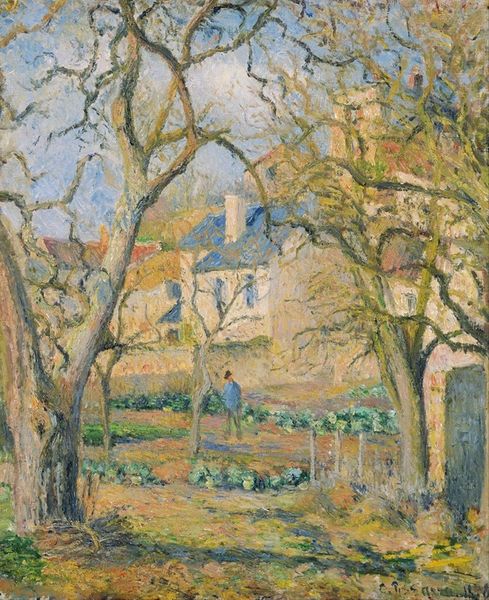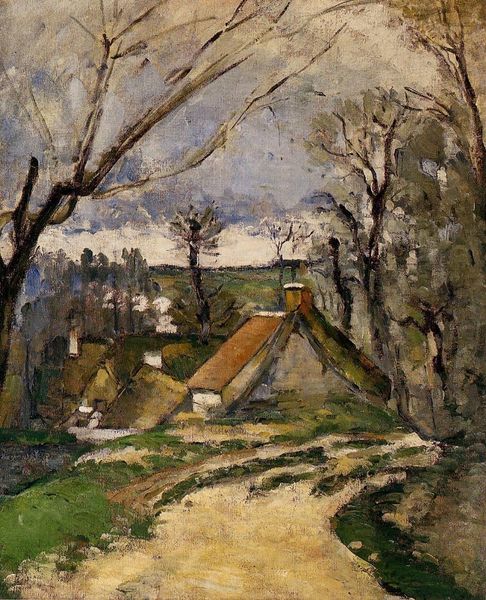
Copyright: Public Domain: Artvee
Curator: Here we have Camille Pissarro's "Landscape from Pontoise," painted in 1874. Pissarro was deeply interested in depicting everyday life and labor. Editor: The palette is interesting. The earthy tones are abruptly disrupted by cool, bright hues of green. I imagine it feels peaceful, yet sturdy somehow. Curator: Absolutely. Note the structure of the painting itself. The division between the stones, path, sky and the overall setting situates itself well. Pissarro explores this community as he understood labor, gender and class, while the brushstrokes convey how daily work in this village may appear, offering both insight into Pontoise itself, and, more broadly, late 19th century rural French society. Editor: It’s striking how the scene centers around the woman with her wheelbarrow. You see her labor, her presence. There is texture, not only to the rendering of her clothing and face but also to the actual ground upon which she walks. The piece emphasizes her relationship to the physical labor of this rural landscape. The roughness, the deliberate layering of paint gives substance to what it meant to engage in daily activities at that point in time. Curator: I think Pissarro is calling for us to look at her, in all that she is, instead of assuming that the impressionistic style is simply ‘beauty.’ I consider what labour this female peasant is expected to fulfill based on societal standards, while the landscape offers an entry point, emphasizing the context that helped to formulate these ideologies. Editor: Right. The raw physicality comes through so powerfully. It resists romanticization. There's an emphasis on what's at hand and on what the process of work might entail. Pissarro uses the oil paints not just to record light, but to show the sheer physicality of what he understood to be the rural class structure. Curator: Indeed, through this very perspective we gain insights to class structure. I appreciate his work because it challenges viewers, in the present day, to deconstruct and comprehend those hierarchies that are deeply ingrained and remain ever present. Editor: I concur. By confronting the grit of life through his deliberate use of material, Pissarro presents a compelling testament to the lived reality of working class citizens in Pontoise.
Comments
No comments
Be the first to comment and join the conversation on the ultimate creative platform.
